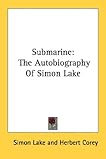Today marks the official adoption of John Philip Holland's gasoline-powered submarine, Holland (SS-1) and the beginning of the U.S.Navy's Submarine Service. It was not the the first U. S. submarine, nor even Holland's first.
Most U. S. school children have heard of the Revolutionary War American submarine, the Turtle. Built in Connecticut by Yale student David Bushnell with trials on the Connecticut River, the Turtle represented 18th century high technology at its best with even Benjamin Franklin on the engineering team.
On the night of September 7, 1776, Army volunteer Sergeant Ezra Lee piloted the Turtle, attacking British Admiral Richard Howe's flagship the frigate HMS Eagle near Manhattan. At this time, the submarine was considered a infernal machine, outlawed by conventional warfare. If caught, Sgt. Lee would have been been immediately hung.
While submerged, Sgt. Lee attempted to attach a time bomb to the ship's hull. Some have blamed the copper plates on the ship's hull, intended to defeat the Teredo worm, from keeping the Turtle's detachable drill bit from boring into the hull. The current thinking is that the complex currents south of Manhattan Island and Lee's inexperience with the Turtle kept him from placing the submarine against the Eagle's hull.
Exhausted and oxygen deprived, Sgt. Lee released the bomb and piloted the little sub to the surface. He opened the hatch, only to discover he had been spotted by picket boats. The British cut short their pursuit after Lee jettisoned his bomb, which later exploded spectacularly. Aside from reports of sea mines, there are no official British records of the event, causing some historians to doubt the veracity of the story.
The British eventually sank the Turtle with its tender when Bushnell attempted other raids with his submersible. Bushnell successfully recovered the Turtle, but it was not used in further attacks. It may have been used as the basis for two additional submarines, which reportedly attacked the British during the War of 1812. However there is also evidence that these two submarines or submersibles were independently developed.
Washington promoted Bushnell as Captain-Lieutenant of the newly created corps of sappers and miners. He proceeded to perfect his underwater mine, which did successfully damage a support vessel of the 28-gun frigate HMS Cerebus.
In the face of public score of the Turtle, Bushnell considered his war work a failure. He left his home state of Connecticut. He may have been in France during Robert Fulton's development of the Nautilus, though proof of any contribution is pretty sketchy. He eventually wound up in Georgia practicing medicine under the name David Bush, where he lived to the ripe old age of 90.
Nonetheless, George Washington did get to pin a medal on Bushnell. Washington described Bushnell as, "a man of great mechanical powers, fertile in inventions and master of execution."
Sunday, April 11, 2010
Subscribe to:
Post Comments (Atom)














No comments:
Post a Comment